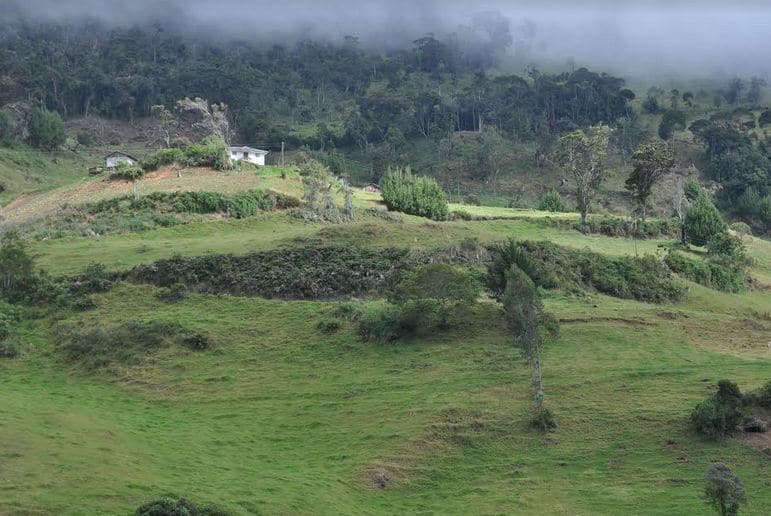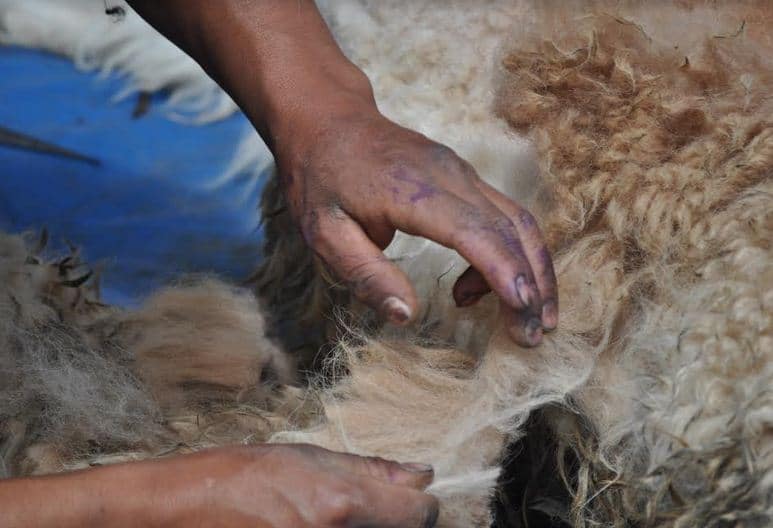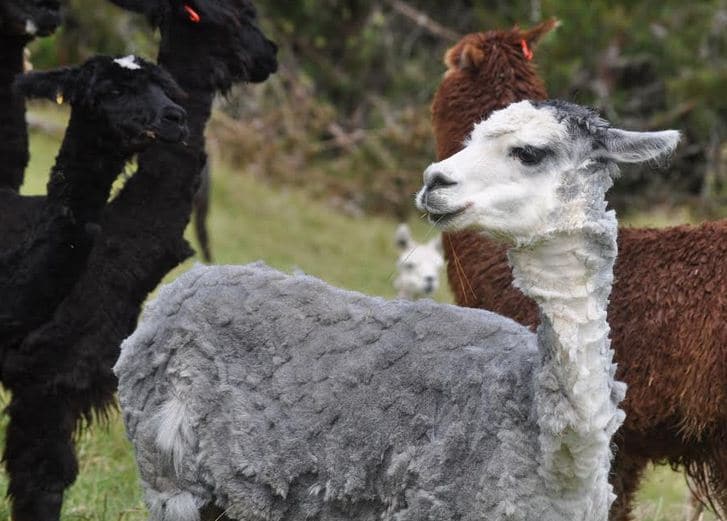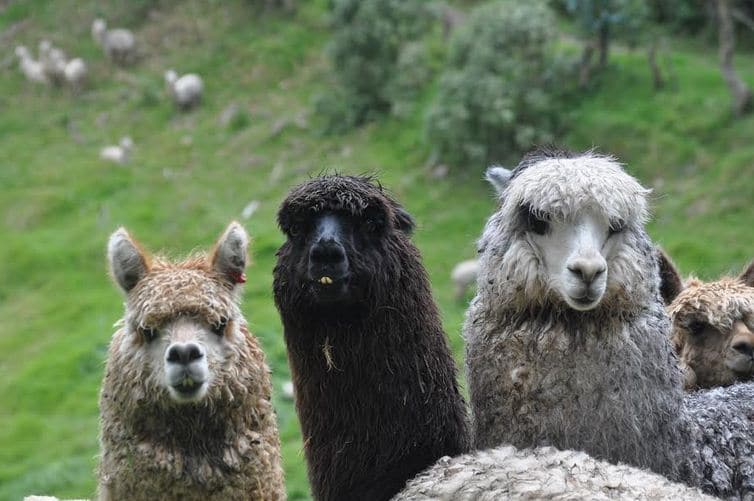Shearing the alpaca in Cañar Province

By Robert Bradley
A peaceful morning mist envelopes its animals as if all the alpaca and sheep in the land gave milk to the dawn.
The mist rises from creeks, fissures, and the mouths of men and mingles with smoke twisting from the distant chimneys across the valley. Trees come and go from one world into another, a vague shadow wrapped in a mystery, now a bright tower stretching over  grassland warming to the sun. Earlier, a bear loped my way on a narrow path but heard my sound of twig snapping stumbles long before either of us saw the other; his sound was a sudden shifting of shadows as he plunged into his own blackness.
grassland warming to the sun. Earlier, a bear loped my way on a narrow path but heard my sound of twig snapping stumbles long before either of us saw the other; his sound was a sudden shifting of shadows as he plunged into his own blackness.
The rasping of mountain toucans speckle the highlands. Unfinished rain clouds linger, abandoned, slumped like a mourner between two weeping candles.

I am on the border of the Nudo del Azuay, a mountain range in the southern tier of the Ecuadorian Andes, adjacent to Sangay National Park, to participate in the shearing of alpaca. The herd exceeds 500.
Roger, the foreman of the ranch I am visiting, has been working with this herd for eight years. He explained the process to me in terms I could understand, “We will be giving the alpaca a haircut.”.

Alpacas claim to fame is that their fiber is softer than cashmere, warmer than wool, hypoallergenic and water repellent. However, there is a dramatic variation in the diameter of the fibers depending on whether they are harvested off the back, which is best (22 microns is excellent), or along the legs and stomach. The sorting takes place as the animals are shorn and each grade is carefully bundled up and labeled for the intended use.
This efficient process to, “waste not, want not”, has gone on virtually unchanged for generations. Care is also taken to shear quickly to lessen the stress on the animals. While some critters cry, complain and generally behave as if this indignity is appalling to them, most simply lie down and endure the ordeal — fresh grass for grazing is only moments away.

The sorting that begins with the first cut of the shears is also the time to consider sorting the alpacas themselves. This is the time to closely examine each animal for signs of general health, dental issues, and nail clipping. One of the more important tasks is checking whether or not a female is pregnant. Those that are will be ushered into a nursery with other expectant mothers where they will be carefully monitored during the 13-month gestation and given special care for their optimum comfort.
I thought this to be a nice touch; the seniors, those between 13 – 17 years old, are most often left to spend their days chewing their cud in comfort. Their contribution days are over. Their job now is to grace the landscape with a beauty befitting only the finest mountain meadows — members of an exclusive club whose gentle ways imprint the land.
Such grace, such endearing curiosity.I am overwhelmed by the grand gesture of symphonic movement as bands move in seemingly choreographed waves along the ancient terraces built by the Cañari as much as 2,000 years before.

Of course, there is a many stages of the process before the fiber becomes a weave of cloth destined for shops and factories. I will attempt to detail some of that at a later date. But for now it is enough to wrap myself in a sweater of incredible beauty, texture, and warmth, as I visit the highlands of the alpaca, to join them as the wheel turns and we return to ways unchanged since forever.
This land was built for eternity. So are we.























